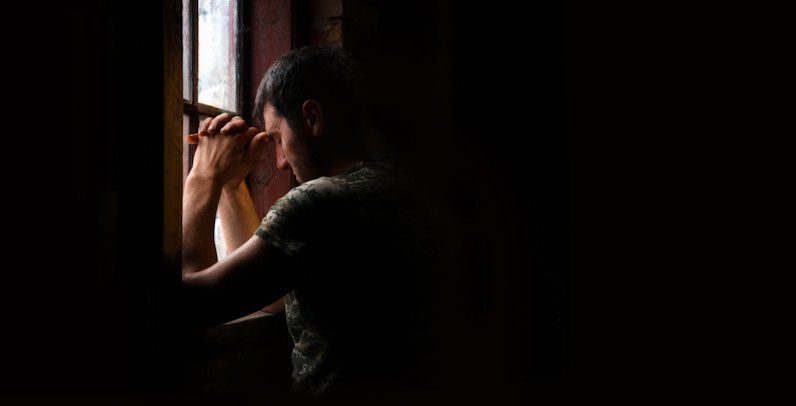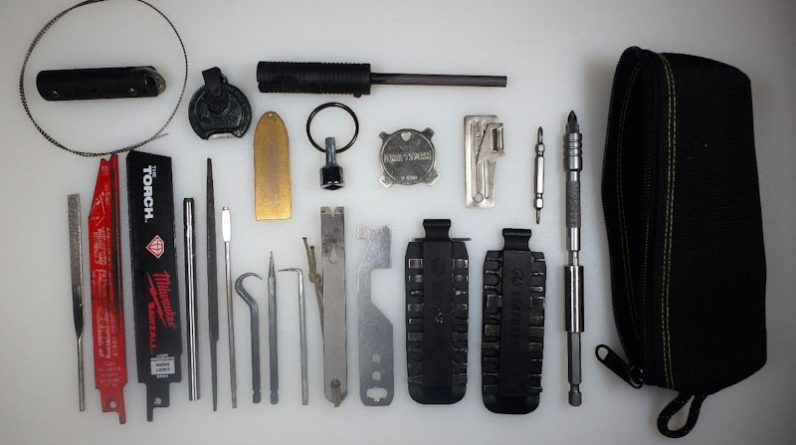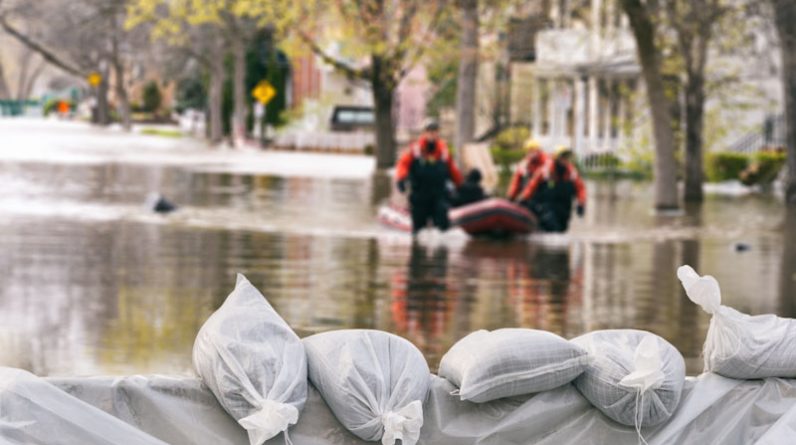Most instructors recommend preparing for rescue over attempting self-recovery and they do so with the zeal of a fundamentalist. If you are a student of survival, I’m sure you’ve heard it over and over. “Stay at the crash site!”, they say. “Stay with your vehicle!”
The reason is that when a survival instructor is learning about survival, they go talk to Search & Rescue personnel … because they should know more about survival and survival ordeals than anybody, right? Well, that depends.
Search & Rescue (SAR)
You see, Search and Rescue is who gets the call when somebody fails when someone is missing in the wilderness. They deal with all the cases where Survivors don’t make it back home. They people who wandered off and got lost or tried to make it and weren’t successful. When someone leaves an aviation crash site, vehicle, camp, road, or trail, it makes a whole lot of work for them, and they often see how deadly the results can be when they end up recovering bodies instead of rescuing live people. They have track people through the wilderness.
So, you can’t blame them for telling folks to stay put and wait to be rescued. And that strategy makes a lot of sense … when it results in people being found. But people aren’t always found. Sometimes they didn’t tell anybody where they went. Sometimes the search is unsuccessful. And sometimes Search & Rescue isn’t called because the folks in a jam find their way out on their own.
I have spent that last twelve years or so studying survival ordeals, lot of them. I have researched thousands of them. Sometimes I read about them. Sometimes I have been able to interview survivors myself. And I noticed that, this advice didn’t jive with my own experience.
In my case, I have affected self-recovery many, many times. And I have help dozens of others out of jams on the trail too. Sometimes it was simply a stuck car or orienting lost hikers. Once some lady in a dress and heels drove her Mercedes coup a good hour and half drive out into the middle of the desert and dropped her muffler.
Sometimes the circumstances were a little more desperate, such as a gunshot wound. I have dialed 9-1-1 in the city before, but I have only requested Search & Rescue once in 40 years of outdoor adventures, and my party ended up getting the folks out on our own, at about 1AM, before SAR could find the missing group.
Self-recovery
Self-recovery is when you make it out on your own. And it happens a lot, but it is a lot harder to track that SAR deployments. SAR deployment generate paperwork, radio activity and news coverage. When a lost hunter eventually finds his way to a road, he hitches a ride into town or back to his vehicle and then drives home. So, I can’t give you a solid number as to how many self-recoveries occur vs. rescues, but I suspect that hundreds of people self-recover for each one who is rescued. I could be wrong, but I suspect that interviews of sportsmen and adventurers will back up my hypothesis.
Salvador
Sometimes emergency signaling is harder than it looks on TV. A fisherman named José Salvador Alvarenga was lost adrift in the Pacific for 438 days. He saw multiple container ships and fishing vessels and tried to attract their attention. Not one of them stopped. Once some guys were fishing off the back of a container ship. They just waved. They see a guy in a boat without propulsion, full of water bottles of rainwater, and covered in the feathers of the sea birds he was eating … big bushy beard … looks like Tom Hanks in the movie Castaway … and they just wave and keep fishing.
Role-Over Car Accident
Once I went out shooting in the desert with a friend from high school, the car hit a bump that knocked my drink over. I bent down to get it, the bumper snagged on a bank, and the car swung sideways and rolled over. During the process, I knocked out the driver’s side window with my face. The vehicle came to a stop upside down.
For a moment it was somewhat surreal. Time slowed, the motor stalled, “Smoke on the Water” by Deep Purple was playing on the radio, and dust swirled through the car as we hung suspended by our seatbelts. When I pressed the release, I dropped on my head and crawled out. After a minute, we heard a vehicle, so I flagged it down, blood running down the side of face and dripping from my arm.
The vehicle slowed, the driver said, “You guys look OK.”, and kept on driving.
My friend and I looked at each other, shrugged, and flipped the car back over. No other cars passed by, so we got the vehicle running and drove home. It was before smartphones. Sometimes, you don’t need to be rescued, but you can’t always know until you try to affect self-recovery.
Incident in the Columbian Amazon
A small plane carrying a Huitoto family from one village to another went down in the Columbian Amazon. The pilot and copilot died in the crash and the mother died from her injuries after 4 days. (Vacchiano, 2023)
Lesly Jacobombaire Mucutuy (13 years old) survived, as did her younger siblings, aged 11, 4, and 11 months. They survived forty days in the Amazon jungle until they were located by a search party. They salvage a little food from the plane but had to live off fruit, berries, and seeds. According to the children’s uncle, the kids told him they had to hide in tree trunks to protect themselves from animals, snakes, and mosquitos. (Sorace, 2023)
They had to leave the crash site to find water, food and to protect themselves from animals and creepy crawlies and that created work for the SAR team. If this had occurred in the U.S., they would have been scolded and lectured about how they should have stayed put at the crash site without a water source, exposed with three dead bodies in Jaguar country.
Keeping four people alive in the jungle for 40-days is not easy, especially if they include a 4-year-old and a baby. When I read about these indigenous kids surviving such a long survival ordeal, I caught myself thinking, “I’m glad they didn’t read the SAS Survival Guide or the U.S. Armed Forces Survival Manual and interpret it as law, or they would have died.” I have thought the same thing about other ordeals.
It doesn’t pay to take a fundamentalist approach to survival. It is more effective to adapt and overcome. That means experimenting, making a lot of small mistakes, and learning from them.
Self-recovery & Rescue
People ask, “Should I plan to bug out or shelter in place?” I respond that they should prepare to do both. I cannot know what the next disaster will be that they face. The result of either action could be certain death or lives saved depending on the threat.
I think a similar position is wise with regard to choosing rescue vs. self-recovery. You cannot always know. Either choice could either get you killed or save you depending on the circumstances. Prepare for both contingencies and then choose after you know what you’re up against. Think “rescue & self-recovery” instead of “rescue or self-recovery.”
Should I Stay or Should I Go?
Know when you should go and when you should stay.
- If you’re sure nobody will be looking for you or that the search has been called off by now, self-recovery may be the only option.
- Being on a line of drift such as a road or trail where traffic is likely and having an effective signal method such as a pen flare launcher is a reason to consider staying put.
- Do not move from where you are unless you have a clear destination in mind, and there is a compelling reason to move because it is typically easier to find a vehicle or camp than a person and vehicles and camps often provide resources you can use to survive.
- If you in danger because you lack shelter or are in a dangerous or unstable environment, you may be better off moving.
- Most survival ordeals are over within hours or days, but some drag on for weeks, months or years. While it’s true that you can live for a month or more without food, don’t wait until you are unable to move.
- Most areas won’t support humans for long. That’s why indigenous cultures are nomadic or plant crops. Once you’ve scavenged, fished, and hunted out an area, move on to an area that has resources instead of slowly starving while you hope for rescue.
What to Do if You Decide to Move
- If you do decide to move, mark your starting point.
- Leave a note in a bag weighed down with a rock, use trail signs or ground signals to indicate the rout you are taking. That way searches will know where you went if they do locate your crash site, vehicle, or camp.
- Communicate your reason for leaving your spot, vehicle, or camp. Do you need resources? Are you attempting to walk out? Have you exhausted resources? Did you realize that nobody is looking for you anymore?
- Leave the date of your departure.
- Note the names, ages, descriptions, and physical conditions/health of each person and what supplies and gear you have.
- If possible, leave footprints in mud high in clay or on tinfoil so SAR personnel can identify your tracks.









